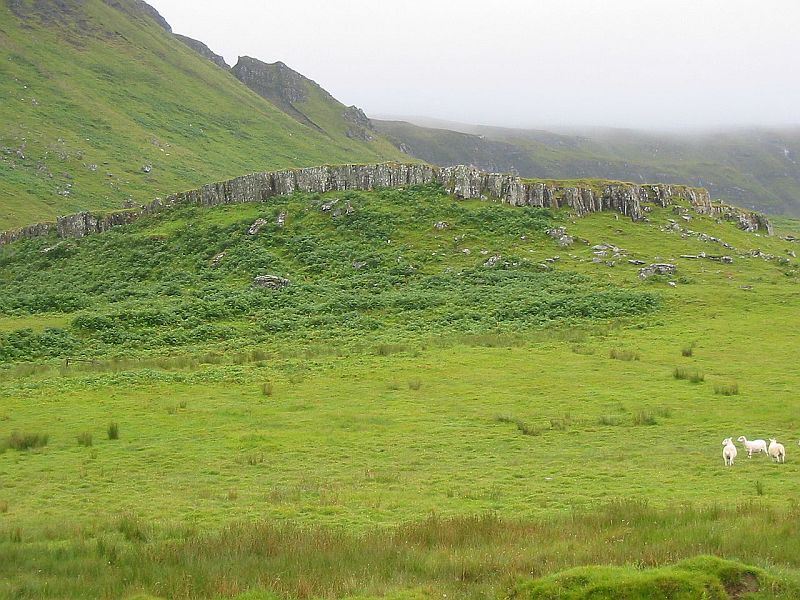Several years ago I visited the Isle of Mull in Scotland. It is geologically interesting island (largely composed of igneous rocks) but I mostly remember the weather. There seemed to be water everywhere. Clouds reaching to the ground, slight rain almost all the time, and soil saturated with water.
It was windy as well, so it was not the best possible day for hiking. Another difficulty that I faced there were the signs of “private property” or something similar with the same meaning. The population of the island is small — less than 3000 but these people seem to enjoy solitude. I didn’t want to disturb them but wanted to see geology. These two wishes went against one another, so I had to make compromises here and there.
Here is one picture from that island. It describes pretty well the weather conditions and general look of the island — green wet mountainsides and sheep. There is one additional interesting geological element. The stone wall in the middle. Is it some sort of ruin of a manmade structure? No, it seems to be dike and it was not the only one. There were several near the western coast running roughly perpendicular to the coastline.
Dike is a tabular sheet of igneous rock that cuts through the surrounding rocks. They typically radially surround larger igneous intrusions which feeds them with fresh material and creates extensional cracks when the magma body rises. These cracks or weaknesses in the rocks are used by molten dike-forming magma which is usually basaltic in composition.

Dike in the Mull Island (near the western coast), Scotland.
Why is this dike standing out? Most likely because it is made of tougher rocks than the rocks surrounding them. Can’t say for sure what type of rocks surrounded these dikes but rocks that cropped out at the coast were some sort of hard sandstones. I am writing this based on my memory. I had no field notebook then. So take these memory pictures with a grain of salt.
I spent a night in tent and left the next day. This day weather was better and everything seemed more pleasant. I hope one day I will go back because the geology there is variable and deserves much closer look. I saw less than I had planned but this happens almost all the time. It is true that geology is not a rabbit, it will not run away but unfortunately it is often hidden. Weathering, soil, vegetation, private property, and foul weather are perhaps the most powerful enemies we have to face in the field. Geology on a geological map and geology accessible in the field are two very different things.
Leave a Reply